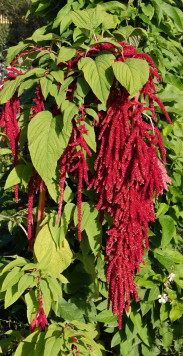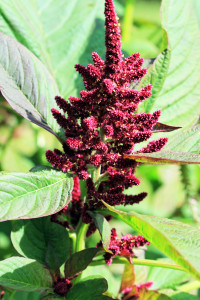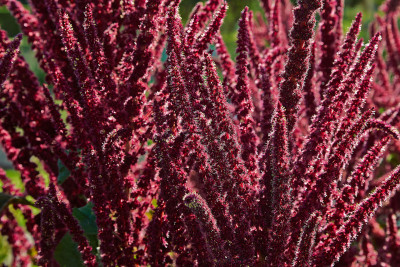Knowing (and cultivating) Amaranth
Amaranth, as mentioned in one of the first posts of this blog (read post), together with Quinoa represents one of the superfoods that are enjoying success worldwide. Amaranth is also a plant capable of adapting to different environments, in fact, in recent decades, it has begun to be cultivated in many areas of the planet, from Asia to South America via Europe.
Amaranth, like Quinoa, is an annual herbaceous plant with surprising and unique nutritional characteristics. About 60 species are known, many of which are wild weeds (in Europe Amaranthus retroflexus is common in vineyards or along country roadsides), while others are used for human consumption, as a vegetable (leaves) but, above all, to produce grain. There are many species that have edible leaves and a pleasant flavour, which, when picked young, can be used like spinach. There are essentially 3 grain species: Amaranthus caudatus, Amaranthus hypochondriacus and Amaranthus cruentus.
Amarantus Caudatus
This species, commonly known as “cola de zorro” (fox tail), is native to the Andean regions and is probably the result of the domestication of the species Amaranthus quitensis. Four subspecies are known; among these the most common and appreciated are those commonly defined as “love lies bleeding” and “Grano de los Incas”. A. caudatus, given its origins, has a greater tolerance to low temperatures and is grown at altitudes between 1600 and 3000 metres above sea level. The plant can reach up to 3 metres in height and is characterised by a very long and drooping apical panicle. The colour and shape of the leaves have a high variability, even the seeds can be white with a pink edge (in most cases), pink or black, but only the light seeds are marketed for food use.
Amarathus Hypocondriacus
This species has been identified by numerous denominations: historically it has been known as A. frumentaceus, A. hibridus, and A. leucoarpus. The species A. hypochondriacus, normally cultivated at latitudes below 25°, is characterised by large inflorescences, considerable plant height, numerous lateral branches and high sensitivity to the photoperiod. The colour of the seed can take on different shades: white, golden, coffee-coloured and, in some cases, black. However, there are several varieties with different characteristics.
Amaranthus Cruentus
It is a species native to Central America but is widespread throughout South America (especially in Mexico), China, India and Africa. This is the most interesting species as regards its cultivation in Italy (P. Casini, F. La Rocca. Amaranto, Manual for Cultivation, 2015). The plant can reach two metres in height and has a single apical panicle. The seeds can be white, yellow (only in these cases are they marketed as grain), brown or black (in vegetable varieties). As regards this species we have a further classification:
In Italy, although Amaranth is now commercially and medically “suffocated” by Quinoa, great progress is being made from an agronomic point of view. In Tuscany, after years of experimentation conducted by the University of Florence, field trials have also given good production results. Personally, I believe that in the short-term, Amaranth, which however has some complexities, could represent, even more than Quinoa, a good productive alternative. Unlike Quinoa, Amaranth is also free of saponins, making it an easier and less expensive transformation process.
Our experience with Amaranth has led us to try different varieties of Amaranthus cruentus. We believe that a varietal improvement is needed, which should be focused on the reduction of the vegetative cycle and on the resistance to low temperatures in the early phenological phases. Producing Amaranth with the organic method is extremely complex as the plant tends to grow very slowly in the first phase, with the risk of being suffocated by weeds. After the 6/8 leaf stage, growth is much faster.




